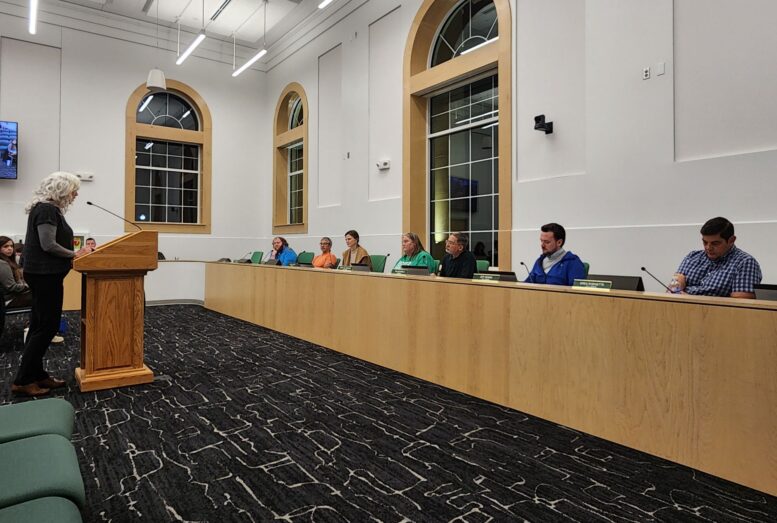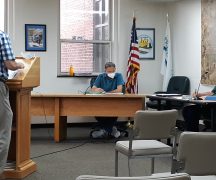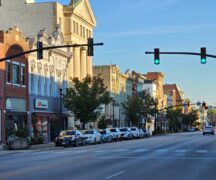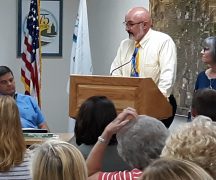By JAN McLAUGHLIN
BG Independent News
Bowling Green officials were asked again to not delay going green with infrastructure projects in the city.
Kathleen Dennis spoke at Monday’s City Council meeting about the importance of engineering projects with the environment in mind.
“The time is past for simply considering the utilization of green infrastructure in projects you are implementing. This is an essential practice for the development of resilient cities,” Dennis said. “We as a community need to act now with every single consideration pertaining to how BG revitalizes, grows and builds our resilience and sustainability.”
But it is likely too late for green infrastructure to be implemented in two multi-use paths planned for construction in the city, Mayor Mike Aspacher said after Monday’s meeting. The time has passed for those projects, and the city’s tight street budget can’t be stretched to cover the extra expense.
Green infrastructure isn’t as simple as planting trees along a path, the mayor said.
Green infrastructure is a practice that uses or replicates natural systems to achieve a desired outcome. This includes green roofs, bioswales and rain gardens. Permeable surfaces are considered green infrastructure as well, because they handle rainfall the same way natural landscapes do. Green infrastructure looks to nature for advice, restoring and replicating ecological systems to create human benefits.
Dennis specifically asked that the city retrofit its plans for the shared use path along South Main Street between Gypsy Lane Road and Napoleon Road.
“This area is one of the largest heat islands in BG,” she said. “Your plan to add a shared use path without providing substantial green infrastructure will do nothing to improve this area and only repurpose asphalt.”
Dennis also mentioned the multi-use path from the Cogan’s Crossing subdivision to the community center and to the Bowling Green Middle School/High School complex.
“The trails should be planted to include trees, native wild grasses, flowers and shrubbery,” she said.
Those plantings would help sequester carbon, promote purification of stormwater runoff, help clean the air and help reduce “heat island” effects.
After the council meeting, Aspacher said the two multi-use paths are too far along in the engineering process to change.
“It’s likely too late,” he said. “Those projects have been under development for years.”
The mayor said the city’s budget currently can’t handle green infrastructure, which can involve using impervious pavement – which then requires a drainage system be installed. “The water’s got to go somewhere,” he said.
“The cost difference is really significant,” he said.
However, Aspacher said in the future the city could consider green infrastructure as an alternative to traditional pavement projects.
Aspacher noted the city’s attempts to go green with some sidewalks where the roots of large trees were buckling the pavement. A flexible rubber like surface has been installed to save the trees and the walkways.
But he pointed out, “It’s more than twice the cost of traditional concrete.”
Dennis also suggested that since city leaders are preparing next year’s budget, it would be a good time for the city’s proposed Climate Action and Resiliency Improvement Plan be adopted so it could be included in the budget process.
She praised the city for already having a sustainability officer, a communication director well versed in sustainability issues, and an arborist, who can guide tree plantings along pathways.
“Please utilize their education, intelligence and creativity to improve our resiliency as a community and add the much-needed green space for improving the lives of community members,” Dennis said.





